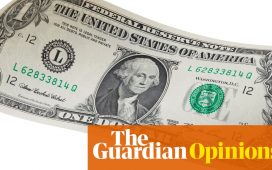The Federal Reserve raised its benchmark interest rate by a quarter of a percentage point on Wednesday, its tenth consecutive increase in just over a year, but signalled it could soon pause its aggressive monetary tightening campaign.
The Federal Open Market Committee’s latest increase, which had unanimous support from policymakers, brings the federal funds rate to a new target range of 5 per cent to 5.25 per cent, the highest level since mid-2007.
In a statement released after its two-day gathering, the central bank scrapped guidance it provided in March, when it said “some additional policy firming may be appropriate” to bring inflation under control.
The FOMC on Wednesday said it would take into account its rate rises so far — and the fact they would take time to feed through to the economy — when “determining the extent to which” further increases “may be appropriate”. It also said it would be guided by future economic data.
In a press conference following the decision, Fed chair Jay Powell described the change of language as “meaningful”. He warned the recent banking turmoil appeared to be “resulting in even tighter credit conditions for households and businesses”, which was likely to weigh on economic activity and the labour market.
He added: “In light of these uncertain headwinds, along with monetary policy restraint we put in place, our future policy actions will depend on how events unfold.”
The yield on the two-year Treasury note, which moves with interest rate expectations, fell to its lowest level in a month as investors bet that this may be the Fed’s last increase of the current cycle. The yield was down 0.11 percentage points to 3.86 per cent.
Kristina Hooper, chief global market strategist at Invesco, said: “This looks like a dovish hike. The preponderance of evidence suggests the Fed will not continue to hike unless something in the data forces the Fed’s hand.”
In March, most officials projected the fed funds rate would peak at 5.1 per cent this year, suggesting no further rate rises beyond the current level.
In its statement, the FOMC said that while inflation remains “elevated”, tighter credit conditions stemming from the recent banking turmoil “are likely to weigh on economic activity”.
The meeting came at a fraught moment for the US economy and financial system as midsized lenders continue to be clobbered after a series of bank failures.
First Republic on Monday became the third bank to be seized by US regulators in the past two months, with the Federal Deposit Insurance Corporation brokering a hasty takeover by JPMorgan. That followed emergency measures that government authorities took in March, just days before the last Fed meeting, to stem contagion after the implosion of Silicon Valley Bank and Signature Bank.
Officials must try to balance a potential credit contraction stemming from the banking turmoil against the fact that inflation remains stubbornly high and price pressures are moderating only gradually.
Powell said on Wednesday: “In principle, we won’t have to raise rates quite as high as we would have had this [banking turmoil] not happened.”
“Policy is tight,” Powell replied when asked whether the benchmark rate of 5 per cent to 5.25 per cent was sufficient to bring inflation under control.
He added that when a 5 percentage point jump in the fed funds rate is combined with credit tightening and the Fed’s plans to shrink its balance sheet, “you feel like we may not be far off or possibly at that level”.
Hooper at Invesco said: “Powell has admitted . . . tightening credit conditions [are] doing some of the Fed’s work for it. There is also a psychological layer to it — that is a recognition that the more the Fed hikes rates, the more things could break.”







